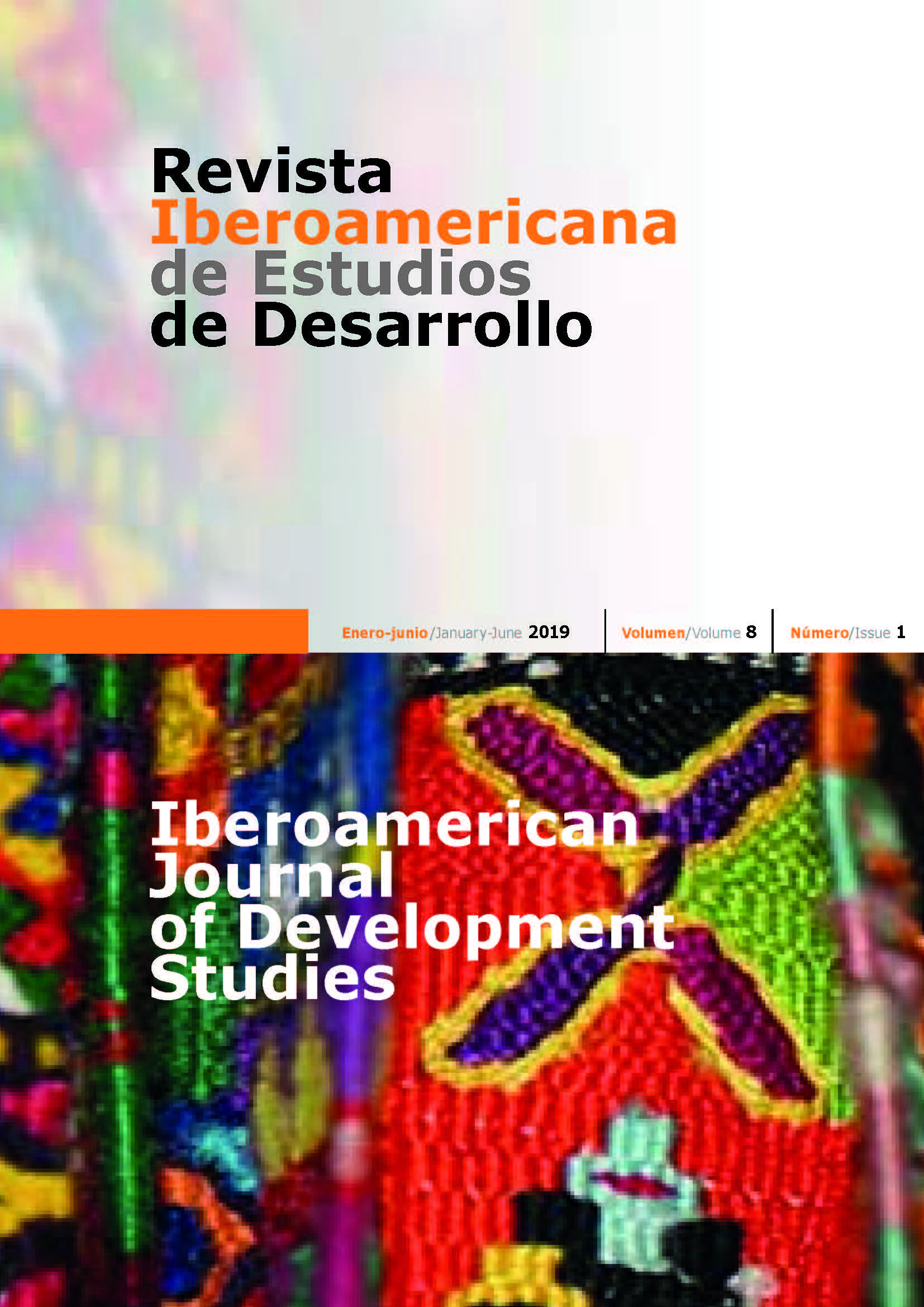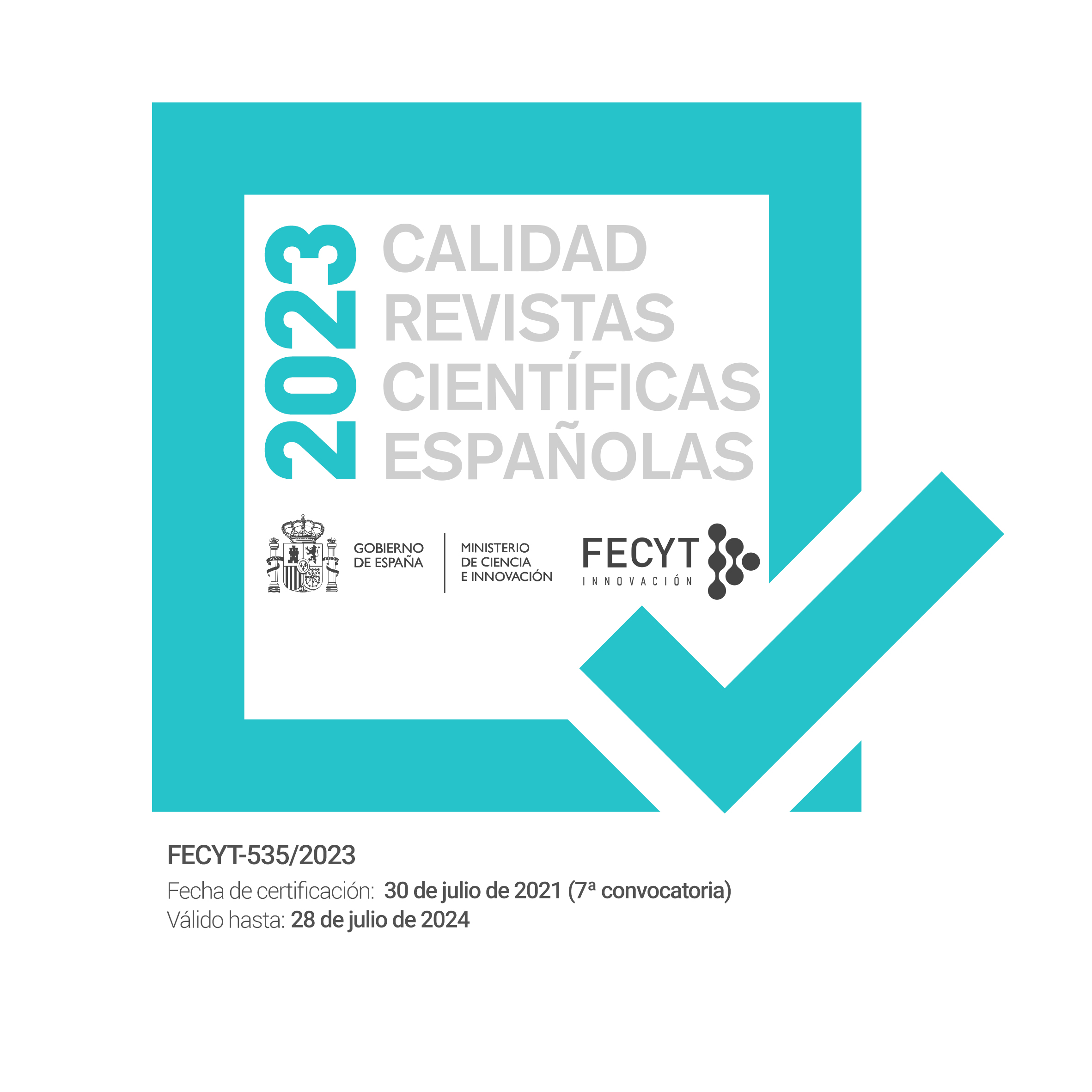Temporary employment and its impact on wages in Latin America
DOI:
https://doi.org/10.26754/ojs_ried/ijds.306Palabras clave:
América Latina, contratos de duración determinada, empleo temporal, salariosResumen
América Latina ha experimentado un proceso de mejora significativa en el mercado laboral durante el nuevo milenio. A pesar de tales avances, dichos países continúan sufriendo importantes déficits en sus mercados laborales. La alta incidencia de la informalidad se convierte en una fuente de bajos salarios y falta de beneficios de Seguridad Social. Incluso dentro del empleo formal, la prevalencia significativa de los contratos no permanentes a menudo conduce a consecuencias similares a las de las ocupaciones informales. En este documento se analizan los contratos de duración determinada en ocho países de América Latina: Argentina, Brasil, Chile, Costa Rica, Ecuador, México, Paraguay y Perú. Nuestro objetivo estriba en estimar la incidencia, evolución y características de dicho fenómeno y evaluar en qué medida el empleo temporal genera brechas salariales. Las técnicas econométricas se utilizan para estimar no solo la brecha salarial promedio entre estos dos grupos de trabajadores sino también la penalidad experimentada por los trabajadores temporales ubicados en diferentes puntos de la distribución salarial.
Descargas
Citas
ARIAS O, KHAMIS M (2008). Comparative Advantage, Segmentation and Informal Earnings: A Marginal Treatment Effects Approach. IZA Discussion Paper No. 3916.
ARULAMPALAM W, BOOTH A, BRYAN M (2004). Training in Europe. Journal of the European Economic Association 2(2-3):346-360.
BASSANINI A, BOOTH A, BRUNELLO G, DE PAOLA M, LEVEN E (2005). Workplace Training in Europe. IZA Discussion Paper No. 1640.
BECCARIA L, MAURIZIO R, VÁZQUEZ G (2015). Recent decline in wage inequality and formalization of the labor market in Argentina. International Review of Applied Economics 29(5):677-700.
BECCARIA L, MAURIZIO R, TROMBETTA M, VÁZQUEZ G (2017). Inestabilidad de ingresos durante un período de mejoras laborales y sociales: América Latina en el último decenio. Revista de Economía Política de Buenos Aires (mimeo).
BERG J (2011). Laws or Luck? Understanding Rising Formality in Brazil in the 2000s. In: Lee S, McCann D (eds.). Regulating for Decent Work: New directions in labour market regulations. ILO and Palgrave Macmillan, pp. 123-150.
BERTRANOU F, CASANOVA L, JIMÉNEZ M, JIMÉNEZ M (2014). Informalidad, calidad del empleo y segmentación laboral en Argentina. Revista de Economía Laboral 11:24-64.
BLANCHARD O, LANDIER A (2002). The perverse effects of partial labour market reform: Fixed term contracts in France. Economic Journal 112(480):214-244.
BOERI T (2011). Institutional Reforms and Dualist in European Labor Markets. In: Card D, Ashenfelter O (eds.). Handbook of Labor Economics, 4th Edition. Elsevier North Holland, pp. 1173-1236.
BOOTH A, FRANCESCONI M, FRANK J (2002). Temporary Jobs: Stepping Stones or Dead Ends. The Economic Journal 112(480):189-213.
BOSCH M, MALONEY W (2010). Comparative Analysis of Labor Market Dynamics Using Markov Processes: An Application to Informality. Labour Economics 17(4):621-750.
BOSSIO G (2009). Temporary employment and wage gap with permanent jobs: evidence from quantile regression. MPRA Paper No. 16055. Munich: Munich Personal RePEc Archive.
BOURGUIGNON F, FERREIRA F, LUSTIG N (eds.) (2005). The microeconomics of income distribution dynamics in East Asia and Latin America. World Bank and Oxford University Press, Washington, DC.
CABRALES A, DOLADO J, MORA R (2014). Dual labour markets and (lack of) on-the job training: PIAAC evidence from Spain and other EU countries. IZA DP No. 8649.
CARPIO S, GIULIODORI D, RUCCI G, STUCCHI R (2011). The effects of temporary contracts on human capital accumulation in Chile. IDB Working Paper Series No. IDB-WP-253.
CAZES S, DE LAIGLESIA J (2015). Temporary contracts, labour market segmentation and wage inequality. In: Berg J (ed.). Labour Markets, Institutions and Inequality: Building Just Societies in the 21st century. Edward Elgar-ILO, USA and Geneva, pp. 147-183.
CEPAL-OIT (2015). Coyuntura Laboral en América Latina y el Caribe, Santiago de Chile.
CONTRERAS D, GALLEGOS S (2011). Wage inequality in Latin America: a decade of changes. CEPAL Review 103, pp. 27-44.
DIAS DA SILVA A, TURRINI A (2015). Precarious and less well-paid? Wage differences between permanent and fixed-term contracts across the EU countries. European Commission Economic Papers No. 544.
DOLADO J, STUCCHI R (2008). Do temporary contracts affect TFP? Evidence from Spanish manufacturing firms. IZA Discussion Papers No. 3832.
FERREIRA F, FIRPO S, MESSINA J (2017). Ageing Poorly? Accounting for the decline in earnings inequality in Brazil, 1995-2012. Policy Research Working Paper 8018.
FIRPO S, FORTIN N, LEMIEUX T (2009). Unconditional Quantile Regressions. Econometrica 77(3): 953-973.
FIRPO S, FORTIN N, LEMIEUX T (2011a). Decomposition Methods in Economics. In: Card D, Ashenfelter O (eds.). Handbook of Labor Economics, 4th Edition. Elsevier North Holland, pp. 1-102.
FIRPO S, FORTIN N, LEMIEUX T (2011b). Occupational Tasks and Changes in the Wage Structure. IZA DP No. 5542.
GAMERO J (2013). Auge económico y trabajo decente en el Perú. In: Farné S (ed.). La calidad del empleo en América Latina a principios del siglo XXI. Universidad Externado de Colombia, Colombia, pp. 218-262.
HERRERA-IDÁRRAGA P, LÓPEZ-BAZO E, MOTELLÓN E (2015). Double Penalty in Returns to Education: Informality and Educational Mismatch in the Colombian Labour market. The Journal of Development Studies 51(12):1683-1701.
HUSSMANNS R (2004). Measuring the informal economy: From employment in the informal sector to informal employment. ILO Working Paper No. 53, Policy Integration Department.
ILO (1972). Employment, income and equality: a strategy for increasing productive employment in Kenya. ILO, Geneva.
ILO (2002). Resolution concerning decent work and the informal economy, Governing Body, 285th Session, Seventh item on the agenda. Geneva.
ILO (2011). Labour Overview: Latin America and the Caribbean. ILO, Lima.
ILO (2012). Labour Overview. Latin America and the Caribbean. ILO, Lima.
ILO (2013). Preliminary Concept Note on Non-standard Forms of Employment, Labour Market Performance and Security Group. Inclusive Labour Markets, Labour Relations and Working Conditions Branch (INWORK). Geneva.
ILO (2016). Non-standard employment around the world: Understanding challenges, shaping prospects. International Labour Office, Geneva.
ILO (2017). Labour Overview. Latin America and the Caribbean. ILO/Regional Office for Latin America and the Caribbean, Lima.
INFANTE R, CHACALTANA J (eds.) (2014). Hacia un desarrollo inclusivo: el caso del Perú. CEPAL-OIT, Santiago de Chile.
JAHN E, POZZOLI D (2013). The pay gap of temporary agency workers – Does the temp sector experience pay off? Labour Economics 24:48-57.
JARAMILLO M (2013). Employment growth and segmentation in Peru, 2001-2011. Country case study on labour market segmentation. ILO Employment Working Paper No. 151.
JARAMILLO M, SPARROW B (2014). Crecimiento y segmentación del empleo en el Perú, 2001-2011. Documento de investigación 72. GRADE, Lima.
JARAMILLO M, ALMONACID J, DE LA FLOR L (2017). Los efectos desprotectores de la protección del empleo: el impacto de la reforma del contrato laboral del 2001. Avances de Investigación Nro 30. GRADE, Lima.
KAHN L (2013). The Structure of the Permanent Job Wage Premium: Evidence from Europe. IZA Discussion Paper No. 7623.
LASS I, WOODEN M (2017). The Structure of the Wage Gap for Temporary Workers: Evidence from Australian Panel Data. IZA DP No. 10670.
LEITE M (2011). El trabajo en el Brasil de los años 2000: dos caras de un mismo proceso. Revista de Trabajo 7(9):115-129.
LÓPEZ-CALVA L, LUSTIG N (2010). Explaining the Decline in Inequality in Latin America: Technological Change, Educational Upgrading, and Democracy. In: López-Calva L, Lustig N (eds.). Declining Inequality in Latin America: A Decade of Progress? Brookings Institution Press, pp. 1-25.
LORA E (2008). Beyond Facts. Understanding Quality of Life. IDB, Washington.
MARULL C (2013). La calidad del empleo en Bolivia y Ecuador. In: Farné S (ed.). La calidad del empleo en América Latina a principios del siglo XXI. Universidad Externado de Colombia, Colombia, pp. 166-216.
MAURIZIO R (2015). Transitions to formality and declining inequality. The case of Argentina and Brazil in the 2000s. Journal of Development and Change 46(5):1047-1079.
MAURIZIO R (2016a). Labor market and income distribution in Latin America in times of economic growth: advances and shortcomings. In: Damill M, Rapetti M, Rozewurcell G (eds.). Macroeconomics and Development: Essays in Honour of Roberto Frenkel. Columbia University Press, pp. 159-187.
MAURIZIO R (2016b). Non-standard forms of employment in Latin America. Prevalence, characteristics and impacts on wages. Conditions of Work and Employment Series No. 75.
MERTENS A, GASH V, MCGINNITY F (2007). The Cost of Flexibility at the Margin. Comparing the Wage Penalty for Fixed-term Contracts in Germany and Spain using Quantile Regression. LABOUR 21(4-5):637-666.
MESSINA J, SILVA J (2017). Wage Inequality in Latin America: Understanding the Past to Prepare for the Future. International Bank for Reconstruction and Development/The World Bank.
OECD (2002). OECD Employment Outlook 2002, Paris.
PATRINOS H (2016). Estimating the return to schooling using the Mincer Equation. IZA World of Labor 278.
PIANTO D, TANNURI-PIANTO M, ARIAS O (2004). Informal employment in Bolivia: a lost proposition? Background Paper for the 2005 World Bank Bolivia Poverty Assessment.
PIRES R (2009). Governing regulatory discretion: innovation, performance and accountability in two models of inspection work. Paper presented at Regulating for Decent Work Conference. ILO, Geneva.
SANTANGELO G (2011). Do temporary contracts cause wage discrimination? A quantile treatment effect analysis for Europe. http://www.aiel.it/page/old_paper/santangelo.pdf , accessed 8 February 2018.
SMITH A (1776). An inquiry into the nature and causes of the wealth of nations. The Modern Library, New York.
TÖPFER M (2017). Detailed RIF Decomposition with Selection ‒ The Gender Pay Gap in Italy. Hohenheim Discussion Papers in Business, Economics and Social Sciences. University of Hohenheim.
TORNAROLLI L, BATTISTON D, GASPARINI L, GLYZMANN P (2014). Exploring Trends in Labor Informality in Latin America, 1990-2010. CEDLAS Working Paper Nro. 159.
WELLER J (2014). Aspects of recent developments in the Latin American and Caribbean labour markets. CEPAL Review 114.
ZIJL M, VAN DEN BERG G, HEYMA A (2009). Stepping stones for the unemployed: the effect of temporary jobs on the duration until (regular) work. Journal of Population Economics 24(1): 107-139.
Descargas
Publicado
Cómo citar
Número
Sección
Licencia
Derechos de autor 2019 Roxana Maurizio

Esta obra está bajo una licencia internacional Creative Commons Atribución-NoComercial-SinDerivadas 4.0.








